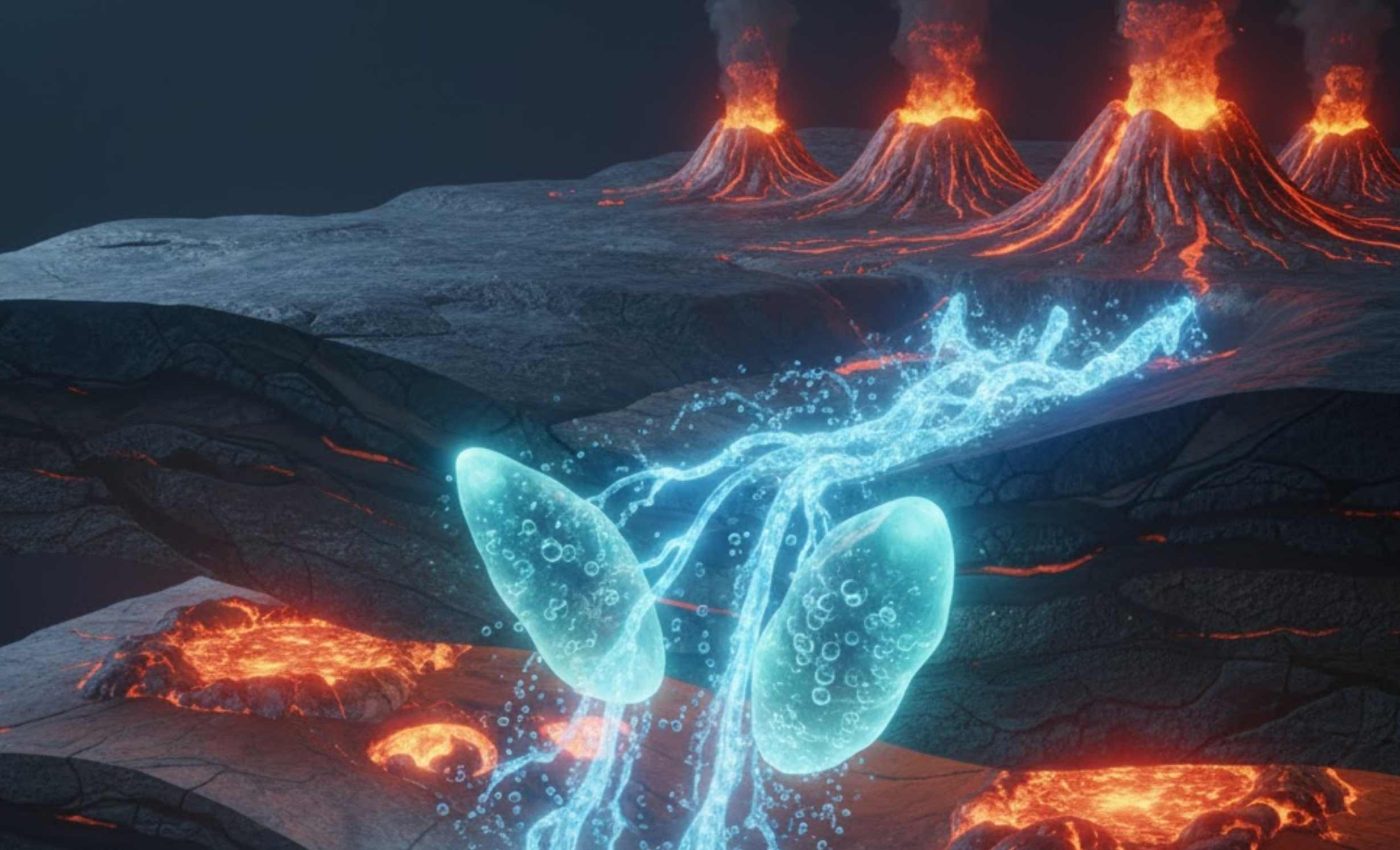
Earth holds a secret water reserve in the form of superhydrated crystals
A common clay in the oceanic crust called talc just showed a new way to move water deep underground. In carefully controlled lab tests, talc changed into a superhydrated crystal that stores about 31 percent water by weight.
That phase appears near 56 to 59 miles deep and lasts to about 78 miles in cold subduction zones. The work comes from a team spanning labs in South Korea, Germany, and the United States.
In salty, mildly basic water, talc soaked up extra water and expanded by about 60 percent, according to a new study. That new structure trapped water between its sheets, raising its total water content to roughly 31 percent.
The work was led by Yoonah Bang, PhD, at Yonsei University. Her research focuses on high-pressure mineral reactions that move water into Earth’s interior.
Water, talc, and angstroms
An angstrom, equal to one ten-billionth of a meter, is used to measure atomic-scale distances inside crystals. When scientists describe an angstrom phase, they mean a stage of a mineral defined by how far apart its atomic layers are.
A larger angstrom number means those layers are spaced farther apart, often because water or other molecules have entered the gaps.
The 15 angstrom phase held steady from about 56 to 78 miles, then shifted into the familiar 10 angstrom phase near 103 miles. After that change, the 10 angstrom phase stayed stable to roughly 112 miles.
“Our work thus demonstrates mineral transformation under more realistic subduction environments, which calls for reevaluation of subduction-related geochemistry and seismicity as well as water transportation into the deep Earth,” said Bang.
How a clay becomes a sponge
The interlayer, the thin space between the sheets, fills with water molecules that bond to hydroxyl groups in the crystal. The team saw a single layer of water at 10 angstroms and three layers at 15 angstroms.
Earlier high-pressure experiments showed talc and water form a 10-angstrom phase near 5 to 7 gigapascals, or a billion pascals. Those runs also needed about 450 to 650 degrees Celsius.
Here, the scientists tested alkaline, slightly basic, salty fluids that resemble slab waters near the trench. Under those conditions, talc broke into the 15 angstrom phase at far lower pressure and temperature.
Where and when the phase forms
The team placed powdered talc in a diamond anvil cell, a device that squeezes tiny samples to extreme pressure. They then tracked crystal changes with a synchrotron, a high intensity X-ray source.
X-rays revealed that the expanded crystal structure appeared deep underground, under pressures found roughly 60 miles below Earth’s surface and at about 662 degrees Fahrenheit.
That pressure aligns with rock conditions near 56 miles in a cold slab, based on global thermal models.
In pure water or salt alone, talc skipped the 15 angstrom step and turned straight into the 10 angstrom phase. That control result points to salt plus mild alkalinity as the trigger for extra water uptake.
Deep water budget changes
The 15 angstrom phase stores far more water than regular talc, about eight times more by structure bound water alone.
When it later shrinks to 10 angstroms near 103 miles, it releases roughly two thirds of that trapped water into surrounding rock.
That extra storage means a larger share of surface water can be dragged down inside hydrous minerals, minerals that hold water in their crystal lattice. It also means a new pulse of water may be released deeper than expected.
Water at depth lowers rock melting points and weakens faults. Those effects can shape magma supply and the type of earthquakes we record.
Lessons from talc and Earth’s water
Water released from the sinking plate helps make magma that feeds arcs, the USGS notes in its overview. A deeper release from shrinking talc could shift where melting starts.
In one cold slab example, the team found a typical source depth near 97 miles, consistent with their lab boundary for the 10 angstrom phase. That match hints that the 15 angstrom to 10 angstrom switch could help set arc locations.
Earthquake counts in that same region dipped between about 47 and 78 miles, then rose between roughly 93 and 124 miles. Those bands line up with the 15 angstrom growth and its later dehydration, a pattern the authors say needs more tests.
Field geologists can search ancient high pressure rocks for the 15 angstrom spacing and its smectite-like swelling behavior. Geophysicists can also hunt for conductivity or seismic fingerprints of extra water at those depths.
Future models should track fluid chemistry, not just pressure and temperature. With the right fluids, talc may be a bigger player in Earth’s deep water cycle than once thought.
The study is published in Nature Communications.
—–
Like what you read? Subscribe to our newsletter for engaging articles, exclusive content, and the latest updates.
Check us out on EarthSnap, a free app brought to you by Eric Ralls and Earth.com.
—–













